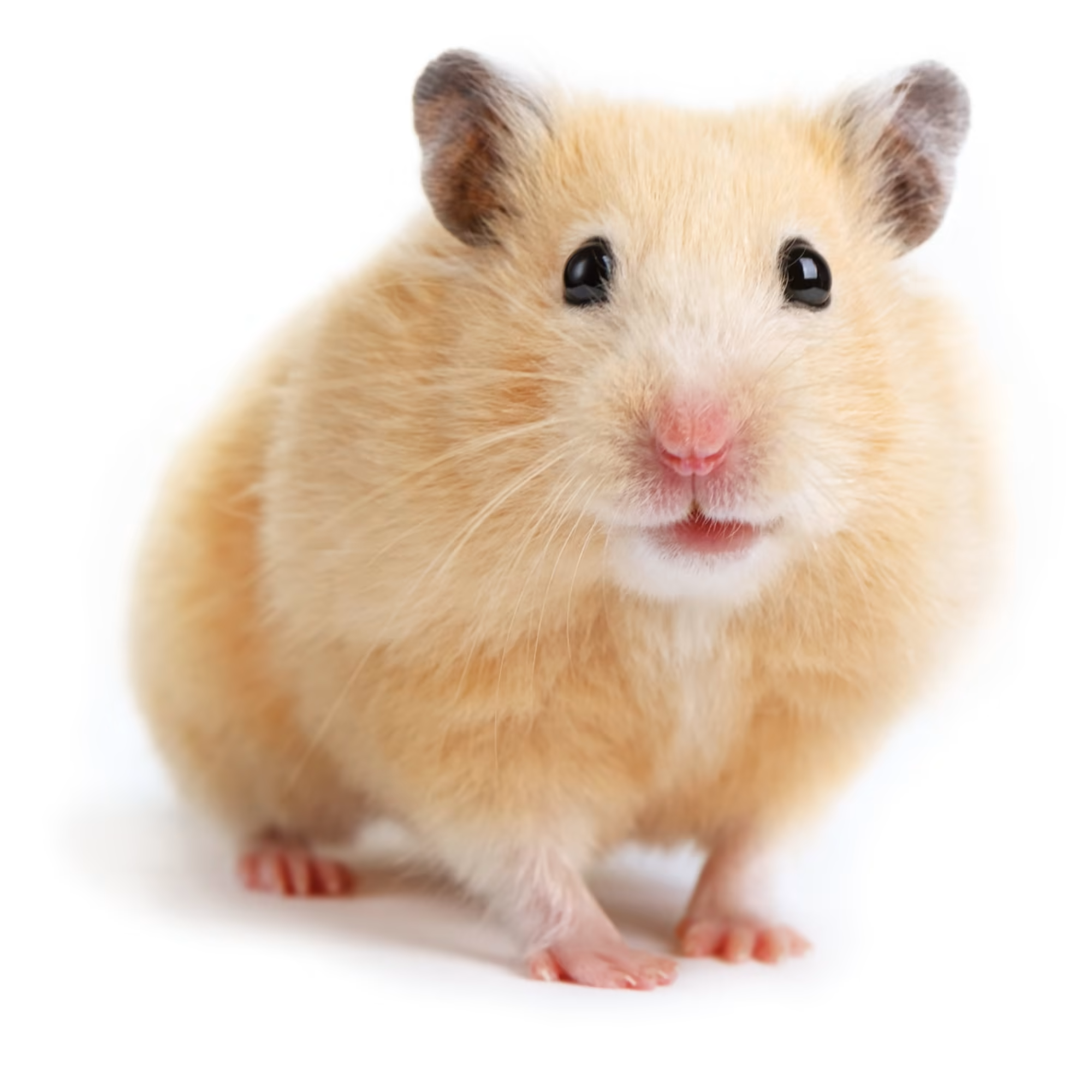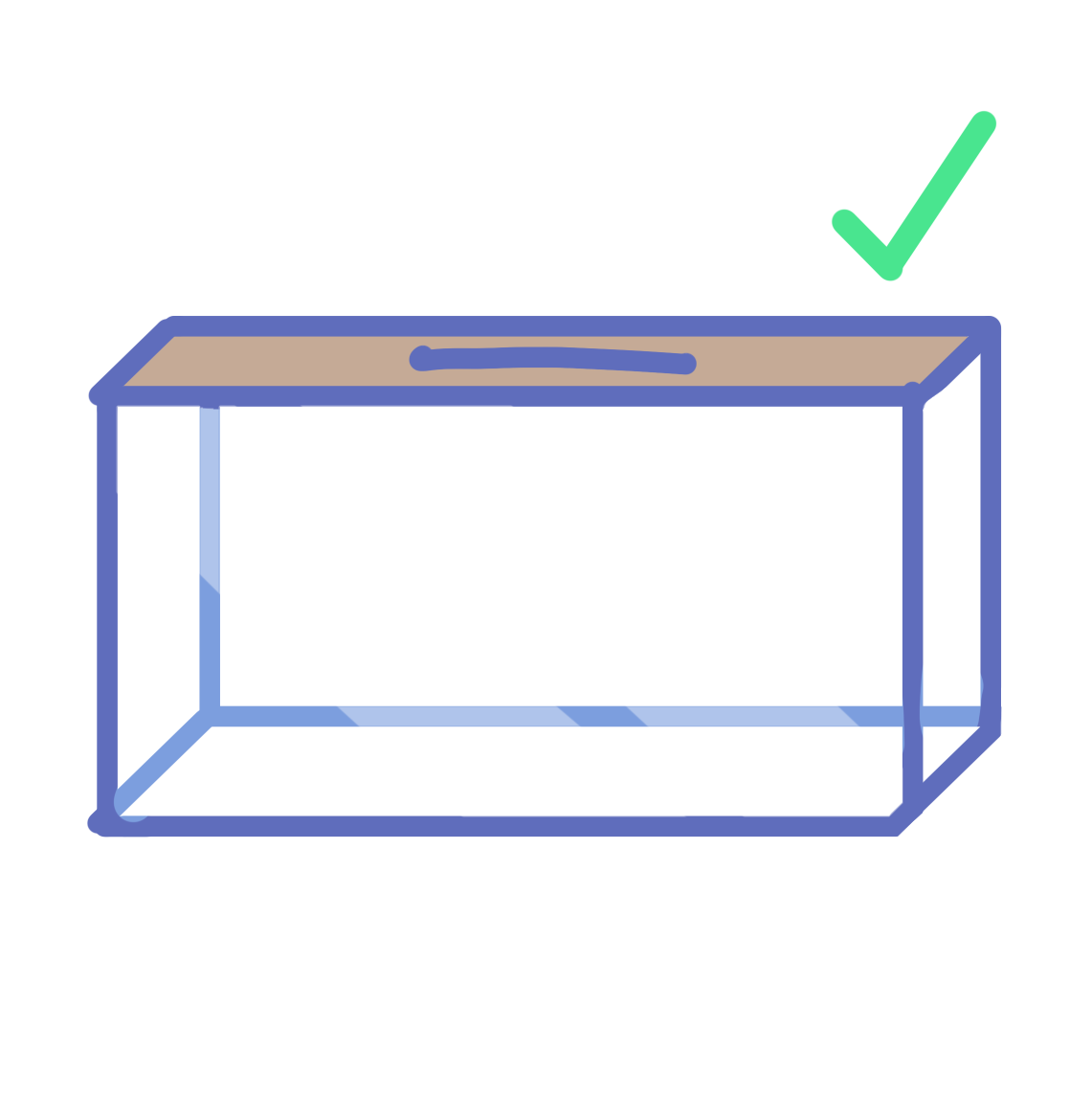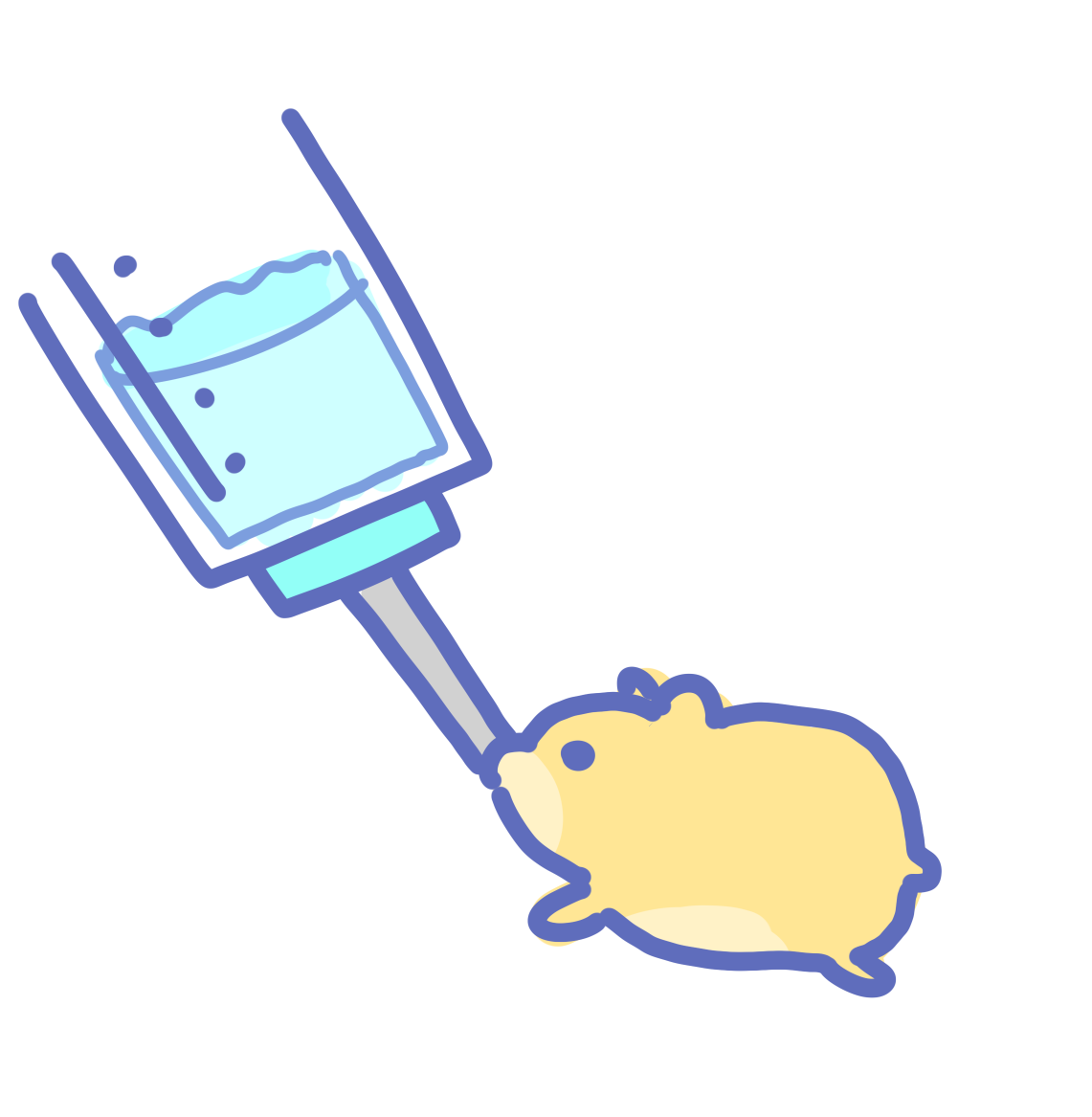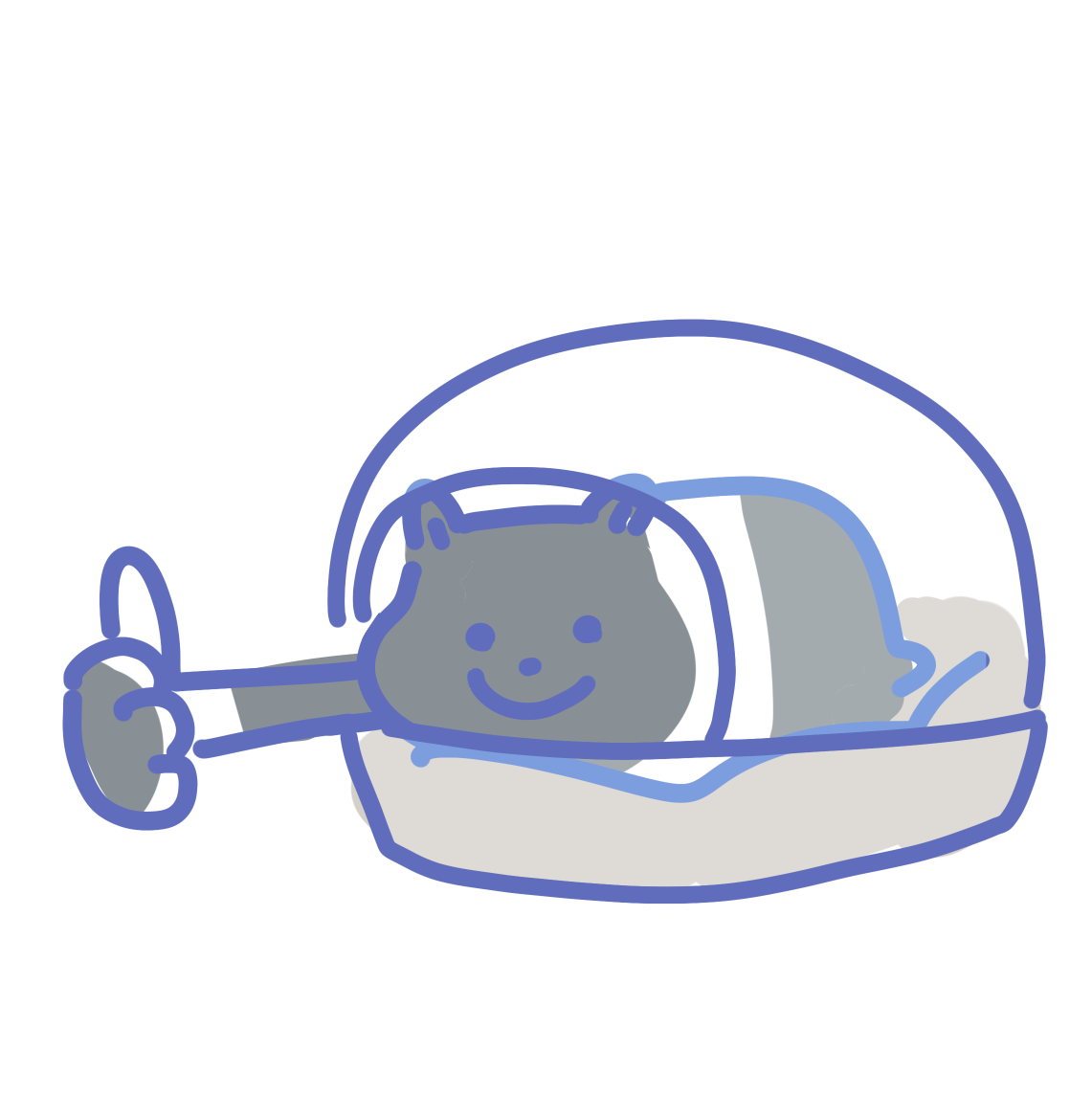
HamCare

A simple guide to owning a hamster!
About Hamsters
Hamsters are cute little rodents that are one of the, if not most, common pets to have. Their lifespan ranges from 2-3 years. In the wild, they feed on seeds, vegetables, and insects. They are nocturnal and commonly chew on things, sice their teeth don't stop growing. There are around 18 species of hamsters, but the most common types to own are syrians and dwarfs! Syrian hamsters are the larger type and tend to be more friendly. Dwarfs are the smaller kind, run very fast, and are more nippy! But they are both great as pets depending on the owner's preferences.

Syrian

Dwarf
So you want to get a hamster...
Many children get hamsters as their first pets because their parents believe that hamsters are easy to take care of. They think that the small animal won’t require too much space, attention, and will be a delight for their child to play with. Not to mention, hamsters are super cute! However, what a lot of people don’t realize is that hamsters need a long list of things to ensure that they have a happy, stress free life. Due to many people not knowing proper hamster care, there are many such cases of hamster owners abusing and neglecting their hamsters in more ways than one.
So, since I love hamsters a lot, I will provide a complete guide on caring for them properly!! This way, less hamsters can be harmed in the future and more people can be educated on them! If you’re thinking of getting a hamster, this list of proper care may help you realize whether getting a hamster is worth the work or not. I’ll let you be the judge! Also I’m using a ton of colorful wording so people don’t get bored while reading ‘cause this is very very important and I need everyone to pay close attention to what I’m going on about...
Anyway, let’s get started! It’s time to learn what hamster care is all about!

Cage
When someone sees a hamster, they may think that since it's a small animal, it can have a small cage. Well, that’s not the case! Hamsters need a lot of space to run around and get stimulation; a small cage will make them stressed and feel trapped! If you’re still not convinced to buy a bigger cage, just imagine if you kept your dog or cat in one small room all day and only took it out of there to play with it. Kind of sounds like animal abuse, right? Buy a big cage. For dwarf hamsters, the cage should be 450 square inches or more, and for Syrian hamsters, the cage should be at least 600 square inches.
Cages with bars are a big no-no as well! Barred cages make the hamster feel closed in. Hamsters will also climb and chew on bars when they are stressed, so not having bars will prevent them from these actions. A clear cage is way better, and makes the hamster feel like it has more freedom. Another thing to avoid in cages are higher platforms/cages that have height instead of width. Hamsters have TERRIBLE vision and no depth perception whatsoever. They do NOT like climbing upwards and have a chance to fall down as well. Hamsters much prefer exploring on a flat, wide area.

Bad Cage

Good Cage
Bedding
One of the favorite pastimes of hamsters is burrowing! Hamsters love to dig intricate burrows, just look at the image on the left! To make these burrows, they need 6-8 inches of bedding. Paper bedding is the best for hamsters, and I recommend getting the white kind so it’s easier to see their urine for clean-up time. You can also use toilet paper as bedding if you want a cheaper option, though I don’t believe just one roll will suffice... If you don’t want to go the paper route, aspen shavings are also okay to use for hamsters!

Sometimes hamsters make burrows like these!
Personally, I would sprinkle some timothy hay in the bedding for extra enrichment and to also provide a little snack for the hamster to chew on from time to time.
Accessories
The thing that your hamster needs most in its enclosure is enrichment – it can’t just be left in there with nothing to do! Here I will provide a list of hamster accessories, what they do for your hamster, and some cheap DIY alternatives (for most).

There are a lot of different accessories to get for your hamster!
Food and Water
A likely unknown thing about hamsters is that they’re omnivores! A pellet diet will suffice, because pet stores usually pack all the needed nutrients for them in those things! But you can also feed them bugs like mealworms (crush the heads off the big ones so they don’t bite) and crickets! Fruits and vegetables are also a good pick as treats! For fruits, give them to your hamster from time to time, as too much may be too sugary for them. Citrus fruits should be avoided entirely.
A hamster mineral block should also be in your cage. These blocks provide calcium for your hamster which is very much needed since they need good teeth to chew! The block can be used for chewing, too.

Hamsters also like seeds.
For water, you can give them either a dish or a glass water bottle made for them. That thing is called a sipper water bottle! You must replace the water daily, it deserves fresh water for the love of god!!!!

Drinking from the sipper water bottle
Socialization
As mentioned before, hamsters are solitary animals. But does that mean you should leave them alone at all times? Never interact with them EVER AGAIN?! Heck no! Hamsters can very much interact with humans! But, they’ll need to get comfortable with you first! When first introducing your hamster to their new home, they can be very skittish, running in every which way, and even biting you when you try to pick them up. To make this happen less, you’ll need to tame your hamster. Taming hamsters can take from a few days to a few weeks (maybe months if you’re unlucky and got a stupid hamster). For taming, I suggest that you give the hamster some time to adjust to its new enclosure, and THEN interact with it. For this first trick, wash your hands, then get some hamster treats, and then lure it near your hand with them. Doing this enough times will let your hamster get used to being picked up or touched! Another trick is to rub your body with toilet paper and then put the toilet paper in the cage. This will let the hamster get used to your scent, even when you’re not there! After it’s tamed though, you don’t have to keep doing this.

Wait for your hamster to come up to you while holding treats
As for getting multiple hamsters to make them “socialize with each other”...NEVER PUT TWO OR MORE HAMSTERS TOGETHER. Hamsters are SOLITARY; they DGAF about friendship and holding hands in a grass field with their kind. I don’t care if they were “littermates” or “super friendly together” hamsters are naturally territorial and will rip each other limb from limb if they catch a whiff of another hamster in their vicinity. So if you plan on getting more than one hamster, you better put them in separate cages unless you want your two to become one real quick.

He's happy because he's alone
And do you have other pets? Like uh… a dog, or cat, per se? Yeah um. Don’t let them anywhere near your hamster’s cage. I used to think it was just fine and dandy if my cat could watch my hamster in their cage since there was a wall in between them, but your hamster can actually SMELL your pet. They are actually very smart and know that there’s a predator near them, which makes them go into stress mode. Of course your other pet can’t actually attack your hamster from the cage, but there have been instances of cats somehow figuring out how to unlock the mechanism of the cage and access the hamster. How the hell do they do that???? That is hardcore dedication right there… But anyway, don’t let your predators around the cage so they don’t have time to plot. Just keep the door to the room your hamster’s in shut at all times, like I always do. AND GOD FORBID YOU LET THEM ACTUALLY INTERACT WITH YOUR HAMSTER FACE TO FACE. I have seen videos of that and it’s actually horrible… Not a cute pet video at all, that animal can attack the hamster at any given moment… Reminder that these are animals! They follow instinct! They don’t have morals like we do, so be very cautious!

A door is a better barrier between your hamster and your other pet.
Also when interacting with your hamster it’s best to do it around night time when they’re actually awake… Let them sleep during the day and don’t disturb them!
Playtime
Oh boy! This is the fun part! I’m sure you’d love to pet and play with your hamster right? But before we play with them, we must get them out of their cage first! First step is to wash your hands! We don’t want them catching any diseases! Now, if you’ve ever handled a hamster before, you may know that they can be quite easy to fall out of your hands, and sometimes can be pretty fast! And like mentioned before, since hamsters have no depth perception, they might run out of your hands and get dropped (which is a big yikes)... To make sure hamsters don’t get dropped when taken out of their cage, carry them in a measuring cup or any glass cup that’s twice their size. I’m serious, they won’t be able to escape these things, and you can successfully carry them anywhere without them falling and getting injured.

Make sure the glass is tall enough for the hamster to not jump out!
Another common toy that’s stereotypical for hamsters and is used to transport them is – you guessed it – a hamster ball. But contrary to popular belief, hamster balls are NOT safe for hamsters at all. There are SO MANY things wrong with these doohickeys. “Oh he loves his ball” well you’re a big fat liar, buddy. Just because your hamster climbs into their ball doesn’t mean it likes it. These guys will climb into anything; if you put a mug or something with a hole near your hamster it will most likely climb into it. Anyway, when hamsters go into those balls it’svery stressful and extremely disorienting since hamsters are not able to see very well. All the other senses that the hamster uses to navigate like touch and smell are taken away because it is in a ball now. It is also very hard to breathe since these balls have very small openings. The small openings can cause it to overheat, especially since it’s using a lot of energy from running around in the ball. Not to mention when the hamster urinates in the ball they will be smelling their urine while they are having trouble breathing as well. Also! Their feet can get stuck in the ball openings and you may have to take it to the vet if the wound gets into contact with the urine and gets infected! So please do not and I mean do NOT put them in them under any circumstances.

So, what are some good alternatives?
Well, firstly you can get a playpen to put them in! Here, you can watch your hamster run around in a safe environment. You can use a cardboard box for this and fill it with treats and paper towels/a blanket. Playpens can also be purchased at the pet store.

DIY playpen made out of cardboard
If you don’t want to go the playpen route, you can also use a bathtub! Yup, a bathtub!!!! Make sure the tub is dry, since hamsters shouldn’t get wet. Then you can put it in there, and even get in the tub yourself! Be very careful that you don’t squish it, though.
The last option is letting your hamster free roam. Remember, this can be dangerous, so make sure to hamster proof your house before doing so! Remove all electrical cords that it could chew on, and block all places it can hide in, since you might lose it. Honestly, for extra safety it would be good to confine the hamster to a single room to run around. If you have any other pets, such as dogs or cats, keep them as far away as possible! Don’t put your hamster in a room where the other animals could have access to them!
Cleaning
Of course eventually, your hamster’s cage will get dirty, but cleaning it is much easier than you think! To clean the cage, you don’t need to take out all the bedding and wash the entire thing when it gets too dirty. Instead, spot clean the cage every 1-3 days, removing soiled bedding from it. Depending on the hamster, there can also be places where your hamster frequently goes to the bathroom, so check there when you do spot cleaning! Urine is the target here, not poop. Poop is odorless and a territory marker for hamsters, so don’t remove too much of it! And remember to never remove all of the bedding in the cage since hamsters are very scent oriented and it stresses them out if their scent markers are gone. However in some cases, like your hamster having mites or a disease, you may HAVE to remove all of the bedding. That’s totally fine if it’s for the safety of your hamster.

Darker parts are urine. You can also smell it too.
You may ask: “Do I have to clean my hamster too? Do I have to give them baths when they get dirty?” and to that I say, no you don’t! Baths are actually strongly advised against since it washes away their natural oils, making them susceptible to illness. Instead, put a sand bath into their enclosure, and they’ll roll in that to clean themselves! Hamsters also groom themselves a lot, so don’t worry about them getting dirty!

Average sand bath
Conclusion
Well, that’s all the information about hamsters for now! So, after reading that, do you feel smarter? Do you feel like getting a hamster and treating it properly? Of course you do! But if there’s a chance that you feel like you’re doing everything wrong, just remember that nobody’s a perfect owner. Even the people who know the most about hamsters also make mistakes, and that’s okay! Just make sure to know the facts so you can give your hamster a happy and healthy life.

Here's my hamster btw her name is Motorcycle